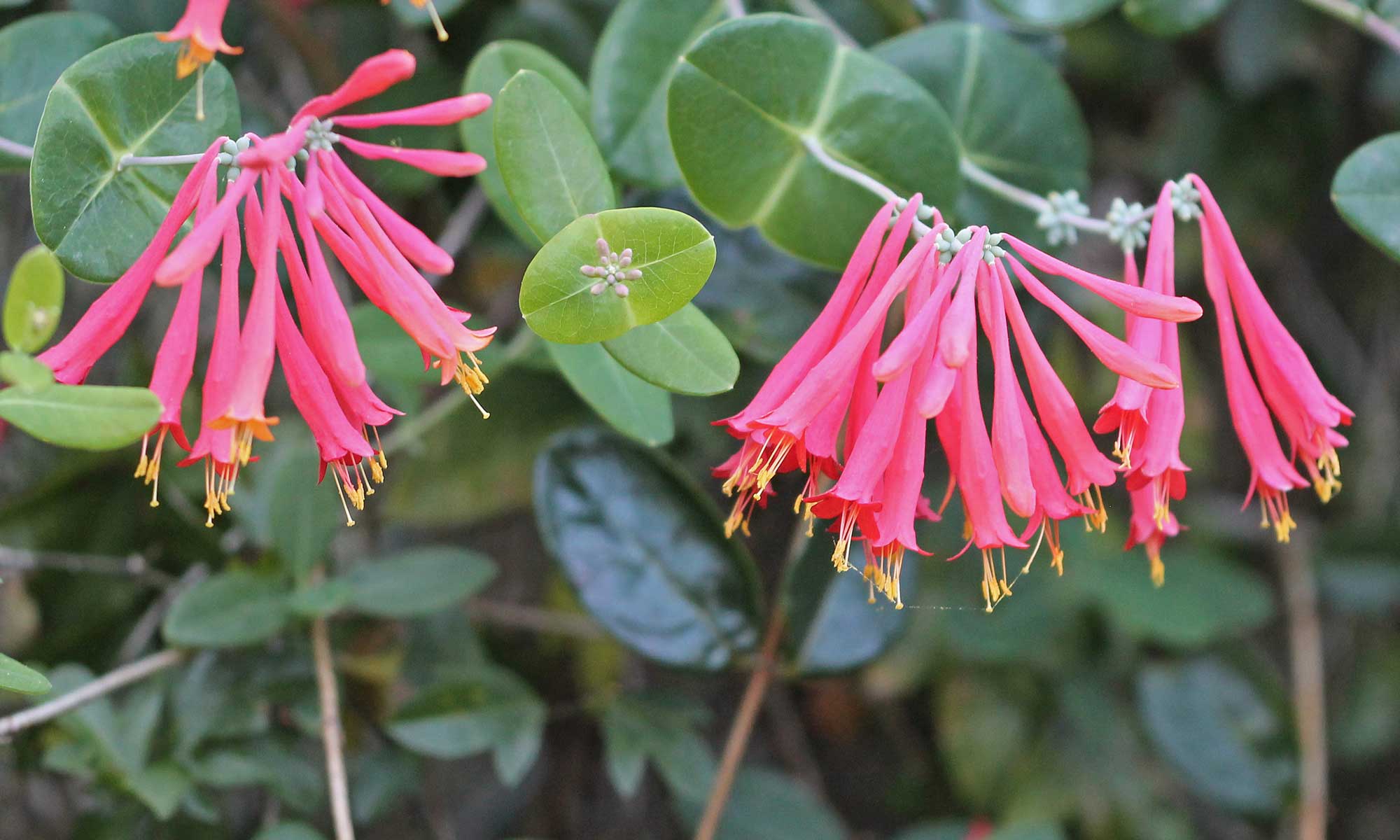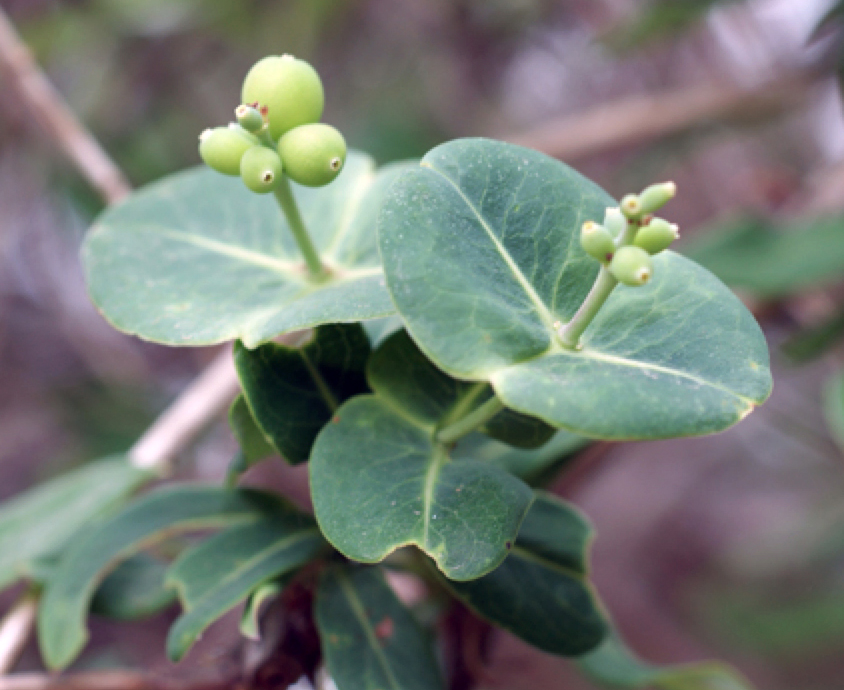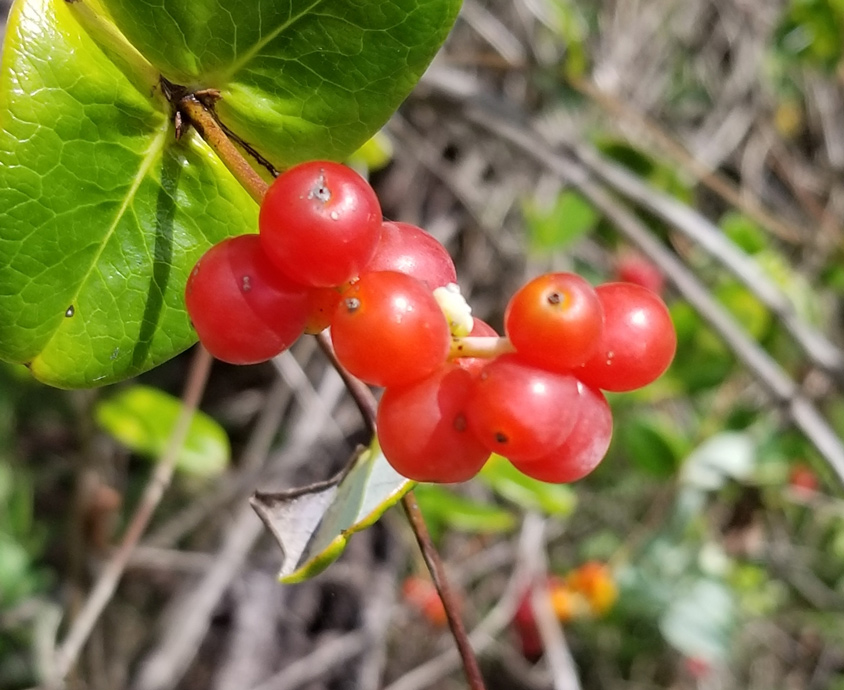Coral honeysuckle
Pictured above: Coral honeysuckle (Lonicera sempervirens) by Mary Keim. Click on terms for botanical definitions. View as a PDF.
Coral honeysuckle is a robust, twining woody vine that is mostly evergreen in Florida, but can be deciduous in colder climes. The plant occurs naturally in sandhills, scrubby flatwoods, hardwood hammocks, floodplain forests and open woodlands. It blooms throughout the year in Central Florida, with best blooming in winter. Farther north, it has a reduced bloom season. The flowers are attractive to many butterflies and moths, and hummingbirds find them irresistible. Birds such as cardinals enjoy the fruits.
Coral honeysuckle’s showy tubular blooms are scarlet red to reddish-orange with yellowish-orange throats. They grow to 2 inches or more in length and are born in dangling clusters. Stamens extend beyond the flower tube. Anthers are bright yellow. Leaves are oval to oblong with entire margins, dark green upper surfaces and silvery-green undersides. They are oppositely arranged. Leaf attachment is sessile; however, those growing directly under or closest to the flower base are usually fully clasping the stem. Fruits are small, bright red berries that appear in the fall.
Family: Caprifoliaceae (Honeysuckle family)
Native range: Panhandle, north and central peninsula
To see where natural populations of Coral honeysuckle have been vouchered, visit florida.plantatlas.usf.edu.
Lifespan: Perennial
Soil: Dry to moist, well-drained acidic to slightly alkaline soils
Exposure: Full sun to moderate shade
Growth habit: 15’+ long
Propagation: Seed, cuttings, air layering
Florida regions of landscape suitability: North, Central
Garden tips: Coral honeysuckle is best if trained to a structure such as a fence, trellis or arbor. Without a structure, it may develop only into a weak shrub. It can also be used as a groundcover in areas that are not used for walking. Combine with Carolina jessamine (Gelsemium sempervirens) for added interest. To harvest seeds, collect fruits when they are bright red, then remove, clean and dry the seeds.
Coral honeysuckle is available from nurseries that specialize in native plants. Visit PlantRealFlorida.org to find a native nursery in your area.
Learn more about Coral honeysuckle from the Florida Native Plant Society and the Institute for Regional Conservation.



